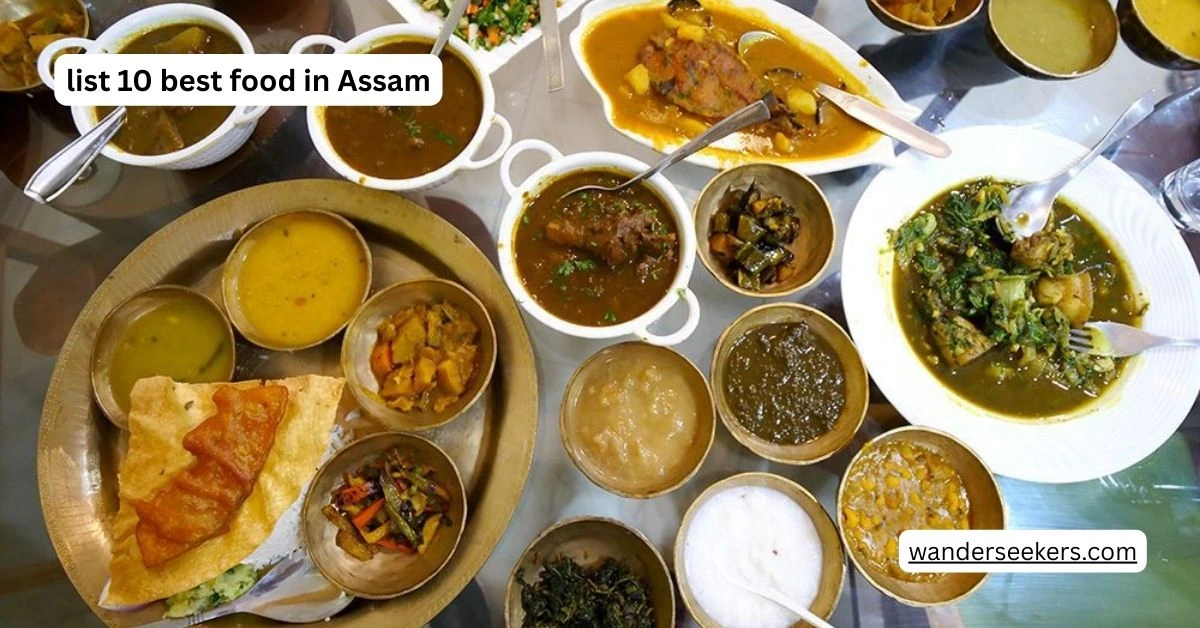Assamese cuisine is a beautiful blend of simplicity and rich flavors, deeply rooted in tradition. Here are 10 of the best foods from Assam, along with detailed descriptions:
Table of Contents
1. Khar
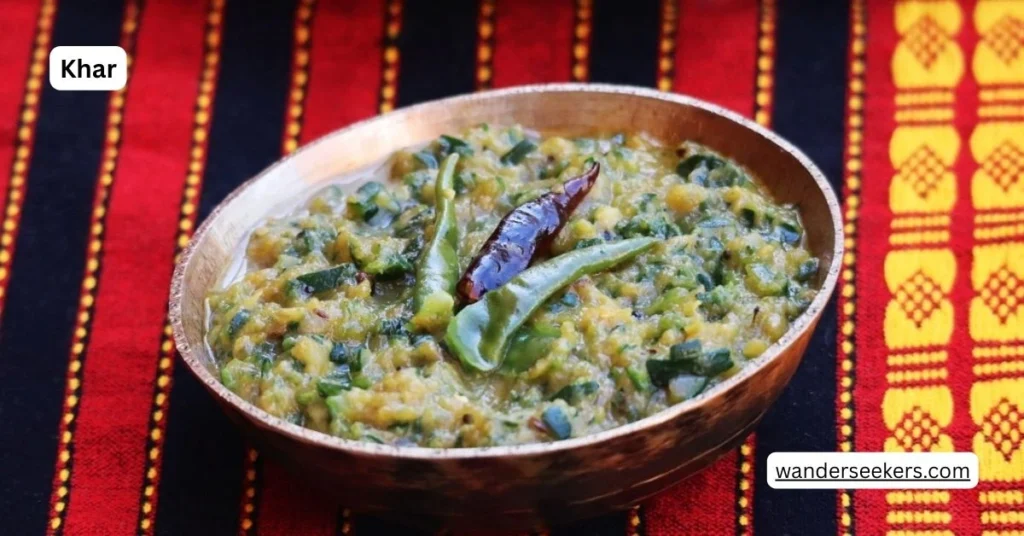
Khar is a traditional Assamese dish made with alkaline ingredients, typically derived from sun-dried banana peels. It is an essential part of Assamese cuisine, known for its unique taste and digestive benefits. The dish is prepared by boiling raw papaya, pulses, or other vegetables with the alkaline extract, which gives it a distinct flavor. Sometimes, fish or meat is added to enhance the taste. Khar is believed to aid digestion and cleanse the stomach, making it a staple in Assamese households. The preparation varies across regions, with some using mustard seeds, garlic, or onions for additional flavor. Despite its simplicity, Khar holds cultural significance and is often served as the first course in traditional Assamese meals.
2. Masor Tenga
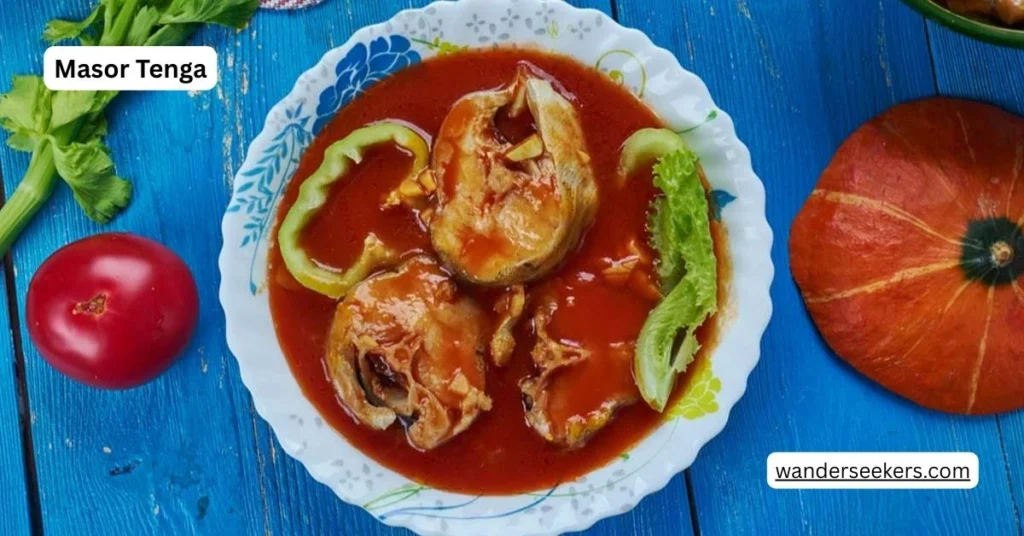
Masor Tenga is a traditional Assamese fish curry known for its tangy and refreshing taste. The dish is typically prepared using freshwater fish like rohu or catla, cooked in a light, sour broth made with tomatoes, lemon, or elephant apple (ou tenga). Mustard oil is an essential ingredient, lending a distinct aroma and depth to the dish. The preparation begins with marinating the fish in turmeric and salt, followed by shallow frying. The curry is then simmered with mustard seeds, green chilies, and the souring agent, creating a delicate balance of flavors. Masor Tenga is often enjoyed with steamed rice, making it a staple in Assamese households, especially during summer. Its simplicity and health benefits, including aiding digestion, make it a beloved dish in Assamese cuisine.
3. Pitika
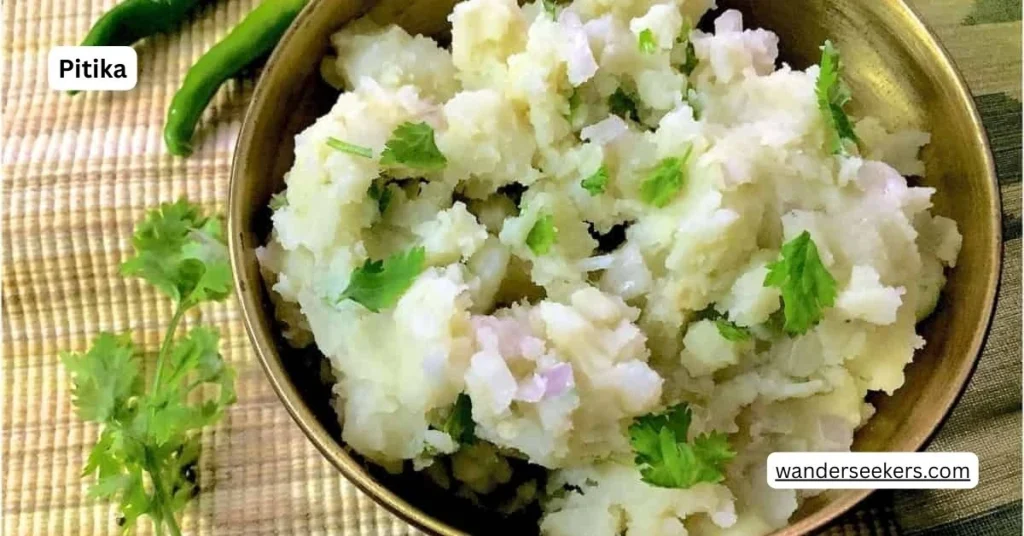
Pitika is a traditional Assamese dish made by mashing boiled vegetables, fish, or pulses with mustard oil, green chilies, onions, and salt. It is a simple yet flavorful preparation that highlights the essence of Assamese cuisine. Common variations include also Ritika (mashed potatoes), Ritika (mashed eggplant), and Yukon maas Ritika (mashed dried fish). The dish is often served as a side with rice, adding a comforting and homely touch to meals. The use of mustard oil gives Pitika its distinct aroma and taste, while the addition of chilies and onions enhances its flavor. Pitika is not just a dish but a cultural staple, reflecting the Assamese tradition of minimal yet delicious cooking.
4. Duck Meat Curry (Hanhor Mangkho)
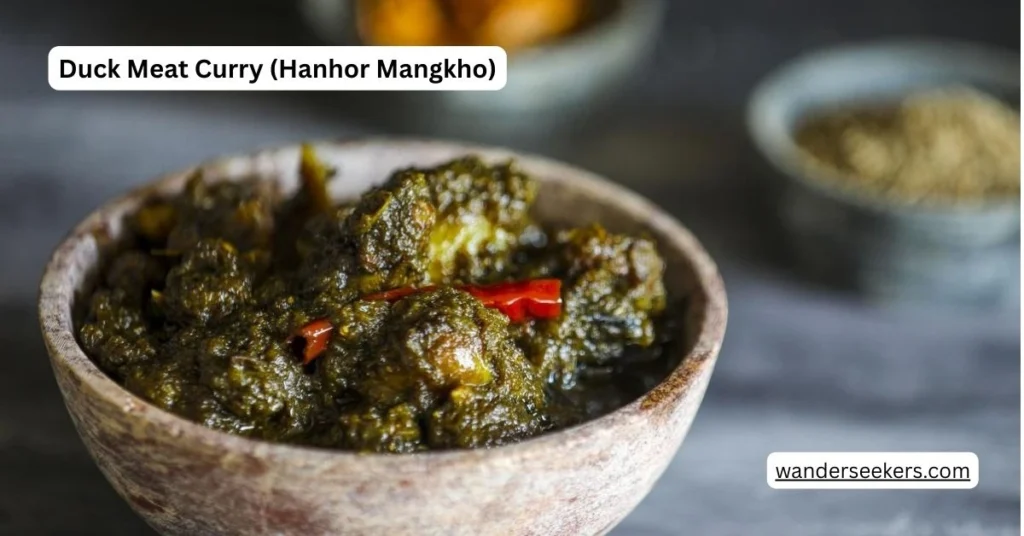
Duck Meat Curry, known as Hanhor Mangkho, is a beloved Assamese dish often prepared during special occasions and festivals like Bihu. This rich and flavorful curry is traditionally cooked with duck meat and ash gourd, though variations include lentils, pumpkin, or sesame seeds. The dish is slow-cooked in mustard oil, which enhances its depth of flavor and is seasoned with turmeric, red chili powder, and ginger-garlic paste2. A souring agent, such as elephant apple (ou tenga) or tamarind, is added to give the curry its signature tangy taste. The slow cooking process allows the duck meat to absorb the spices, resulting in a tender and aromatic dish. Hanhor Mangkho is typically enjoyed with steamed rice, making it a comforting and hearty meal.
5. Paro Mangxo (Pigeon Meat Curry)
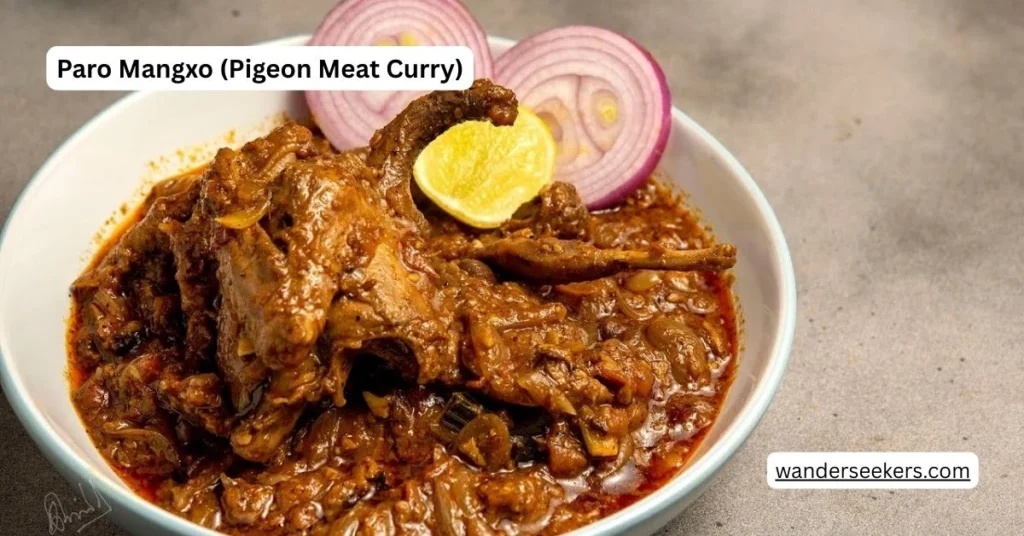
Paro Mangxo, or pigeon meat curry, is a traditional Assamese delicacy known for its rich and spicy flavors. This dish is often prepared with a blend of aromatic spices, including turmeric, black pepper, dried red chilies, and cumin seeds, which enhance the taste of the tender pigeon meat. The curry is slow-cooked in mustard oil, a staple in Assamese cuisine, to bring out its depth of flavor. Potatoes are commonly added to complement the meat, making the dish heartier. Some variations include the use of panch phoran, a five-spice mix, for an extra layer of complexity. Paro Mangxo is typically enjoyed with steamed rice, making it a comforting and flavorful meal, especially during festive occasions.
6. Ou Tenga
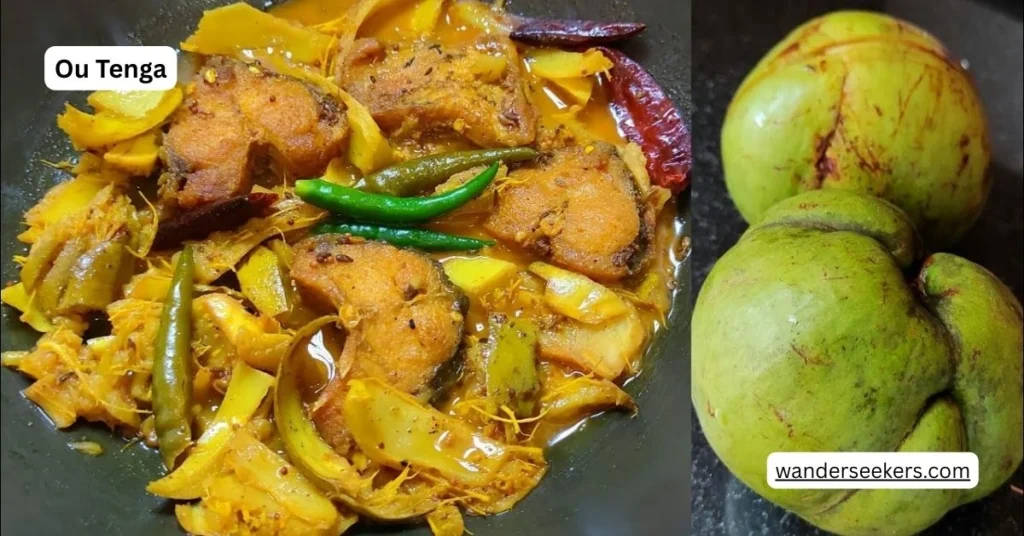
Ou Tenga, or elephant apple, is a tangy fruit widely used in Assamese cuisine to add a sour flavor to dishes. It is commonly incorporated into curries, chutneys, and stews, enhancing the taste with its natural tartness. One of the most popular preparations is Ou Tenga Maas, a fish curry where the fruit is simmered with mustard oil, tomatoes, and spices to create a refreshing, sour broth. Apart from its culinary uses, Ou Tenga is valued for its medicinal properties—it is rich in vitamin C and antioxidants, aiding digestion and boosting immunity1. The fruit can also be eaten raw or used to make juices and jams. Its unique taste makes it a staple in Assamese households, especially during summer.
7. Xaak aru Bhaji
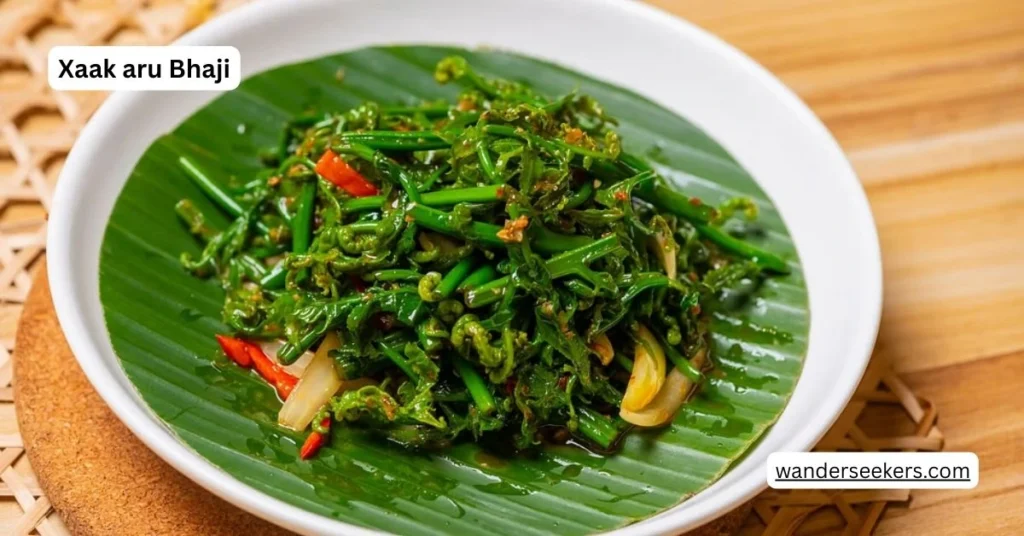
Xaak aru Bhaji is a traditional Assamese dish that highlights the simplicity and nutritional value of leafy greens and vegetables. “Xaak” refers to a variety of edible greens, such as spinach, mustard leaves, or fenugreek, while “Bhaji” means stir-fried vegetables. The dish is prepared by sautéing the greens with mustard oil, garlic, onions, and sometimes potatoes or lentils for added texture. A touch of turmeric and green chilies enhances the flavor, making it a wholesome and aromatic dish. Xaak aru Bhaji is often served as a side dish with rice, complementing the staple diet of Assamese households. The minimal use of spices allows the natural flavors of the greens to shine, making it a healthy and comforting meal.
8. Silkworm Fry
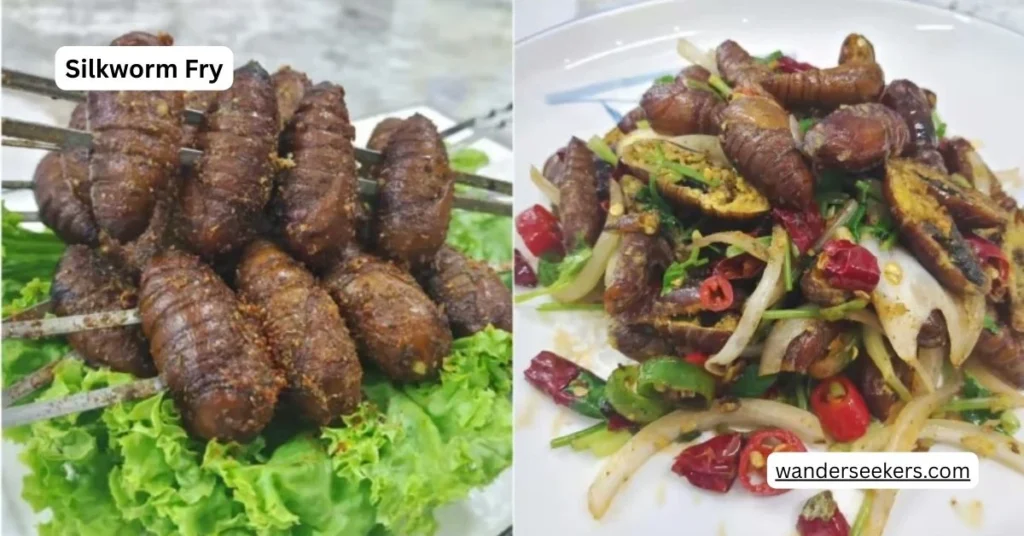
Silkworm Fry is a unique delicacy enjoyed in parts of Northeast India, particularly in Nagaland and Assam. This protein-rich dish is prepared by boiling silkworm pupae and then frying them with aromatic spices like turmeric, chili powder, garlic, and ginger. Mustard oil is commonly used to enhance the flavor, giving the dish a distinct taste. The silkworms develop a crispy outer texture while remaining soft inside, creating a delightful contrast. Some variations include adding green chilies or vinegar for extra tanginess. Silkworm Fry is not only a flavorful dish but also packed with nutrients, including amino acids and unsaturated fatty acids, making it a healthy choice. Though unconventional to many, it is a cherished dish among locals and is often served with rice.
9. Baanhgajor Lagot Kukura
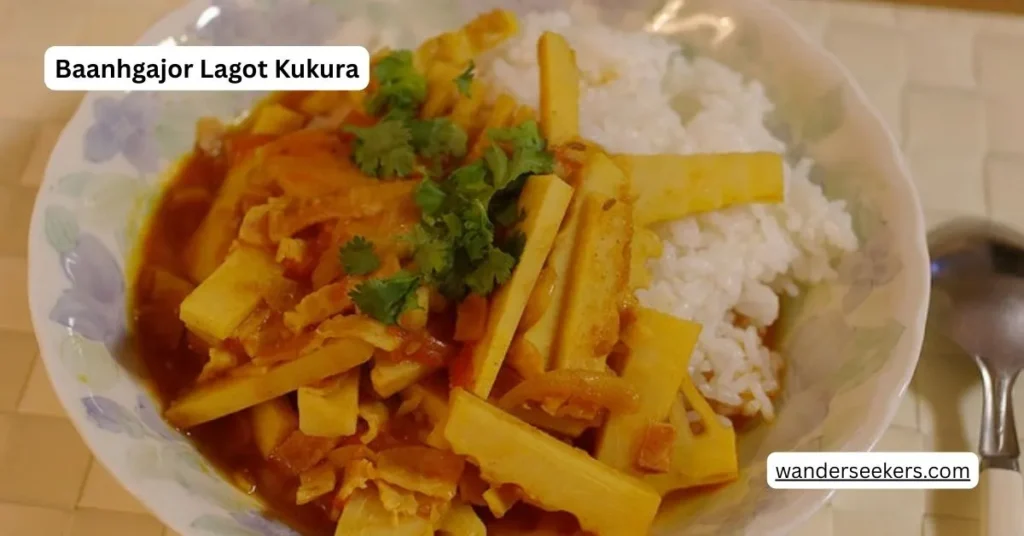
Baanhgajor Lagot Kukura is a traditional Assamese chicken curry made with bamboo shoots, a staple ingredient in Assamese cuisine. The dish combines tender chicken with the earthy aroma of bamboo shoots, creating a flavorful and aromatic curry. The preparation involves marinating the chicken with turmeric, salt, and mustard oil before slow-cooking it with onions, garlic, ginger, and green chilies. The bamboo shoots add a slightly tangy taste, enhancing the depth of flavor. Mustard oil is used to bring out the authentic Assamese essence, while spices like coriander and cumin complement the dish. The slow cooking process allows the flavors to meld beautifully, resulting in a rich and comforting meal. Baanhgajor Lagot Kukura is typically enjoyed with steamed rice, making it a beloved dish in Assamese households.
10. Doi-Chira

Doi-Chira is a traditional Assamese breakfast dish that is simple, nutritious, and deeply rooted in Assamese culture. It consists of flattened rice (chira) soaked in fresh curd (doi) and sweetened with jaggery or sugar. Sometimes, grated coconut and seasonal fruits like bananas or mangoes are added to enhance the flavor and texture. This dish is a staple during Assamese festivals like Bihu, where it is served as part of japan, a light morning meal. Doi-Chira is not only delicious but also packed with health benefits—it provides probiotics from curd, energy from rice flakes, and essential nutrients from jaggery and coconut. The dish is typically served cold, making it refreshing, especially in Assam’s humid climate. Its simplicity and cultural significance make it a beloved breakfast choice among Assamese households.
